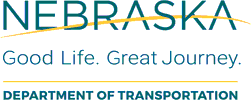Nebraska Local Technical Assistance Program

Nebraska Department of Transportation: Research Reports
Date of this Version
3-2016
Document Type
Article
Citation
Sharma A., Wang, S.,Khattak, A. "Active Traffic Management Case Study: Phase 1" (2016) Nebraska Department of Roads Research Report SPR-PI1(14) M007
Abstract
This study developed a systematic approach for using data from multiple sources to provide active traffic management solutions. The feasibility of two active traffic management solutions is analyzed in this report: ramp-metering and real-time crash risk estimation and prediction. Using a combined dataset containing traffic, weather, and crash data, this study assessed crash likelihood on urban freeways and evaluated the economic feasibility of providing a ramp metering solution. A case study of freeway segments in Omaha, Nebraska, was conducted. The impact of rain, snow, congestion, and other factors on crash risk was analyzed using a binary probit model, and one of the major findings from the sensitivity analysis was that a one-mile-per-hour increase in speed is associated with a 7.5% decrease in crash risk. FREEVAL was used to analyze the economic feasibility of the ramp metering implementation strategy. A case study of a 6.3 mile segment on I-80 near downtown Omaha showed that, after applying ramp metering, travel time decreased from 9.3 minutes to 8.1 minutes and crash risk decreased by 37.5% during the rush hours. The benefits of reducing travel time and crash cost can easily offset the cost of implementing ramp metering for this road section. The results from the real-time crash risk prediction models developed for the studied road section are promising. A sensitivity analysis was conducted on different models and different temporal and spatial windows to estimate/predict crash risk. An adaptive boosting (AdaBoost) model using a 10 minute historical window of speeds obtained from 0.25 miles downstream and 0.75 miles upstream was found to be the most accurate estimator of crash risk.

